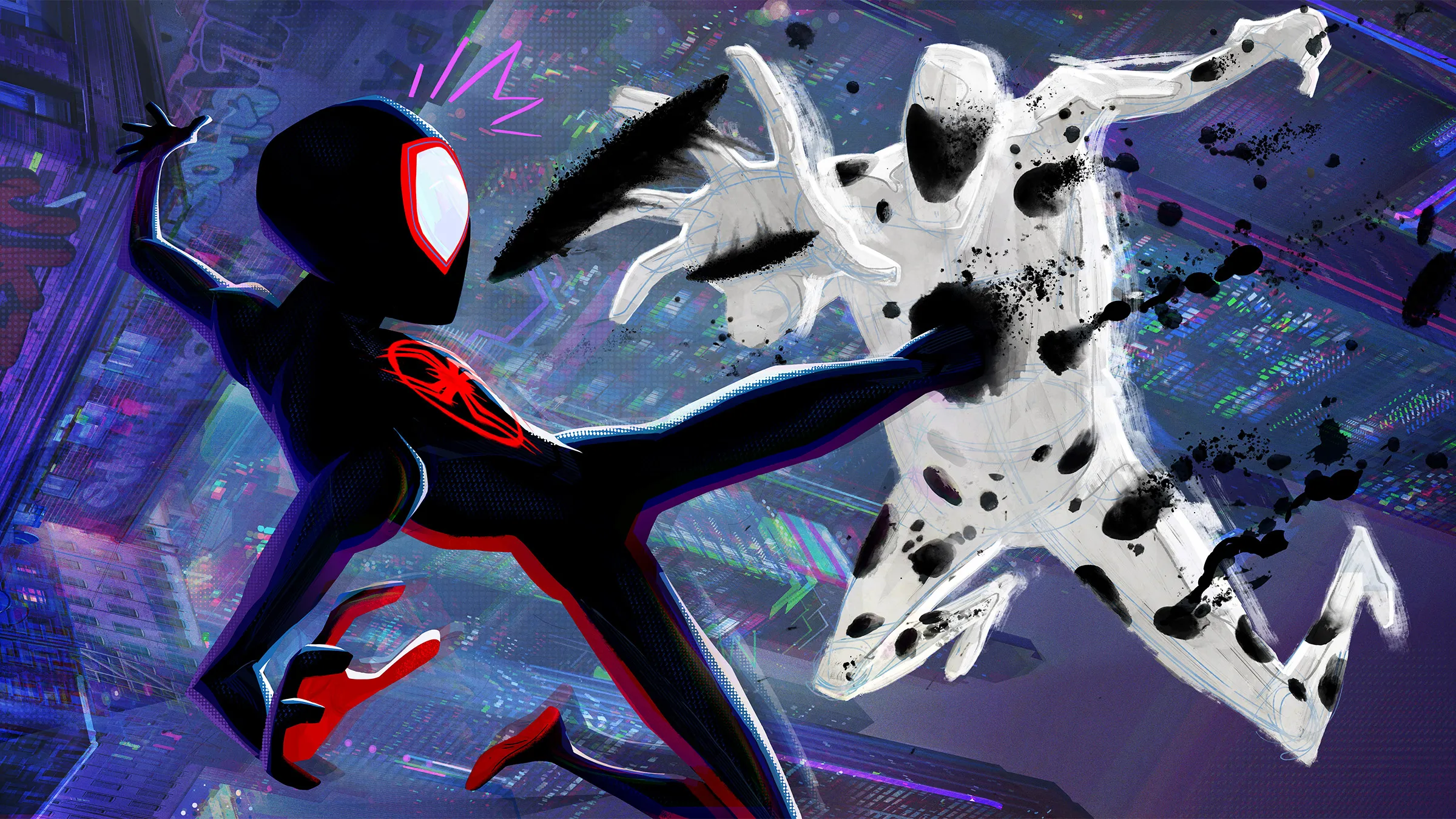‘Spider-Man: Across the Spider-Verse’ revolutionises the superhero genre
Spider-Man (2002)’s rousing success created the blueprint for the modern-day superhero film, which has dominated Hollywood ever since. An enticing underdog story where the hero learns that, with great power, there must also come great responsibility, was accompanied by ingenuity in the style and imagery. Years later, with superhero movies following this same trailing narrative and plot line, the repetition has created some fatigue for audiences. However, the Spider-Verse films, featuring Miles Morales as the lead Spider-Man rather than Peter Parker, have brought us back to the creativity and magic of Tobey Maguire’s Spider-Man trilogy. And with this great spark of life, they have constructed a new and exciting theme. In fact, this remarkable cinematic feat may very well serve as a model for future superhero movies, even those existing beyond the animated realm.
Across the Spider-Verse tackles the characters’ adolescence, alongside their role as heroes, without appearing out of touch or superficial
We are immediately immersed in the colourful tapestry of Gwen’s world, where we take a much deeper look at her personal life. After the very real dust has settled following a captivating fight sequence, Gwen is confronted by her father to reveal her identity. This constant struggle with identity and the struggle for acceptance by the ones closest to them is something that haunts both Gwen and Miles throughout the film. Across the Spider-Verse tackles the characters’ adolescence, alongside their role as heroes. without appearing out of touch or superficial, appreciated greatly considering the trope of the overexaggerated emotional teenager we often see portrayed on screen.
Each frame of Spider-Man: Across the Spider-Verse could very well be hung in an art museum
And from the very first scene, we are privy to the film’s beautiful art style. Each frame of Spider-Man: Across the Spider-Verse could very well be hung in an art museum. We are sucked into this world through an art style that forms and responds to the characters’ emotions, using colour and glare to do so. This approach, unlike anything witnessed in animated films before, evokes the imagery of the late Stan Lee’s comics that portrayed emotion through the design. Consequently, animators might find newfound appreciation in them, as there is less emphasis on direction from voice actors or scriptwriters, but rather on how these animators lay the structure for the audience’s engagement with each character on a much deeper level.
The film’s ground-breaking animated style wouldn’t be enough to carry the film if not for its plethora of strong characters, including the Spot, who serves as the central villain. The Spot, sporting a cow-like design, at first glance appears to be a trite ‘villain of the week’. Yet, his weak figure and insecurity create a more realistic portrayal of a villain, with a gradual, organic evolution of a power-seeking motivation rather than the archetype of a power-hungry megalomaniac. The Spot’s dorky attitude shines through his choice of quips, which is juxtaposed by Miles’s composed nature, who is in fact physically more focused on texting his parents during their fight, as if mildly perturbed by a bumble bee fluttering around a room. However, Miles’ judgement is very much mistaken as the Spot’s resentment seems to be borne from Miles’ lack of awareness and apathetic attitude, which stems from his youthful mindset. This curious dynamic creates a villain whose very existence is intertwined with Spider-Man himself, driven by a need for validation as the ultimate motivator for power-seeking. Whilst the Spot’s threat looms large for the sequel, the biggest antagonist to Miles’s story is Miguel O’Hara/Spider-Man 2099, a stern and intimidating figure whose entrance immediately establishes his dominant presence. Miguel’s complex utilitarian approach creates a debate for the audience, who must decide whether he represents a force for good or evil.
The film’s plot uses the multiverse in an intriguing fashion to takes us deep into the Spider-Verse, showcasing great contemporary characters but also many classic characters harkening back to different eras of Spider-Man. The integration of these characters is seamless, as it is a sweet nod rather than deliberately using nostalgia to carry the film. This new creative team behind the movie, have clearly been given room for imagination, has constructed well-thought-out dimensions and worlds, lending the film a surprising touch of sci-fi. The presence of multiple Spider-People representing diverse backgrounds and personalities contributes to this fresh imagining of the Spider-Verse. This bold attempt at creating something new with this age-old character is refreshing. The Spider-Verse films stand as remarkable examples of inclusion in Hollywood, showcasing the strength and brilliance of diversity through their exceptional storytelling.
After seemingly building up to a climactic fight scene towards the end to top the film off, it seemed as if those final 30 minutes were merely there to sell you on the sequel. The sole gripe I have with the film is this unsatisfactory ending, as it leaves you slightly empty inside, with many of the characters’ arcs hanging in the balance. And with that, I’ll leave you with this last critical thought. Whatever direction Beyond the Spider-Verse takes, one hopes it can build off what it has set in place and remain a worthy conclusion to one of the greatest superhero movie trilogies ever. Through its animation, creativity, representation, and worldbuilding – Across the Spider-Verse is a truly revolutionary film.

Comments